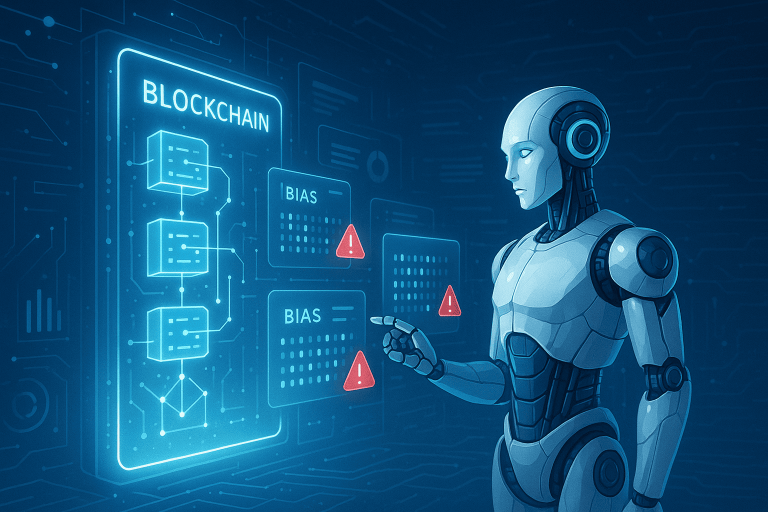
In a world where speed, accuracy, and innovation are the cornerstones of competitive advantage, businesses are racing toward automation. But traditional automation isn’t enough anymore. Repetitive, rule-based tasks can only take us so far. Enter Intelligent Process Automation (IPA) — a powerful blend of AI, Machine Learning, RPA, and advanced analytics that’s transforming the way organizations operate.
In this blog, we’ll explore what IPA is, how it works, and why it’s one of the most impactful technologies for businesses in the digital age.
📌 What is Intelligent Process Automation?
Intelligent Process Automation (IPA) refers to the integration of artificial intelligence (AI) with robotic process automation (RPA) and business process management (BPM) to create systems that can think, learn, and act autonomously.
Where RPA handles structured, rule-based tasks, IPA adds intelligence to tackle unstructured data, adapt to changes, and make decisions — just like a human, but faster and more accurately.
💡 In short: IPA = RPA + AI + ML + NLP + BPM
🧩 Core Components of IPA
- 🤖 Robotic Process Automation (RPA) Automates repetitive, manual tasks such as data entry, invoice processing, and form filling.
- 🧠 Artificial Intelligence (AI) Enables machines to mimic human thinking. AI helps IPA systems analyze data, detect anomalies, and make decisions.
- 🗣️ Natural Language Processing (NLP) Allows systems to understand and interpret human language — useful for emails, documents, chats, and voice commands.
- 🔁 Machine Learning (ML) Systems learn from data and past outcomes to improve accuracy and performance without human intervention.
- 🧭 Business Process Management (BPM) Streamlines and monitors workflows across departments, ensuring the automation aligns with business goals.
- 🔍 Process Mining Uses data logs to analyze and map out business processes — identifying where automation will be most effective.
🚀 Why IPA is a Game-Changer for Businesses
✅ 1. Faster Operations
Tasks that used to take hours or days can now be completed in minutes, 24/7.
✅ 2. Cost Efficiency
IPA reduces the need for human labor in repetitive processes, leading to significant cost savings.
✅ 3. Improved Accuracy
No more typos or missed steps — IPA ensures consistent, error-free execution.
✅ 4. Scalability
Unlike humans, IPA systems don’t get tired or require breaks. They can scale instantly with business demand.
✅ 5. Better Customer Experience
Quick service, accurate responses, and seamless experiences boost customer satisfaction and retention.
🏭 Industry Use Cases of IPA
IPA is not just theory — it’s already transforming industries globally:
💳 Banking & Finance
- Loan processing
- KYC verifications
- Fraud detection
- Compliance and risk management
🏥 Healthcare
- Patient onboarding
- Claims processing
- Appointment scheduling
- Clinical documentation
🛒 Retail & E-commerce
- Inventory management
- Personalized marketing
- Chatbots for customer support
- Order and return automation
📦 Logistics & Supply Chain
- Real-time tracking
- Route optimization
- Invoice processing
- Demand forecasting
👨💼 Human Resources
- Resume screening
- Employee onboarding
- Payroll management
- Performance evaluations
📈 Real-World Example of IPA in Action
Let’s say a global insurance company receives thousands of claims every week. Traditionally, this would require manual reviews — a time-consuming and error-prone process.
With IPA:
- RPA bots extract data from claim forms.
- AI evaluates the claim against policy terms.
- ML models flag potential fraud based on historical patterns.
- The system automatically approves or routes claims to human agents only when necessary.
Result?
✅ Faster processing
✅ Lower fraud rates
✅ Happier customers
✅ Reduced workload for human staff
💡 IPA vs RPA: What’s the Difference?
| Feature | RPA | IPA |
|---|---|---|
| Data Handling | Structured only | Structured + Unstructured |
| Intelligence | No | Yes (AI/ML/NLP included) |
| Decision Making | Rule-based | Adaptive and context-aware |
| Learning Capability | None | Learns and improves with time |
| Use Cases | Simple tasks | Complex workflows and cognitive tasks |
🔮 The Future of IPA
As businesses continue to digitally transform, IPA will become a strategic necessity rather than a competitive advantage.
In the near future, we can expect:
- Greater adoption of low-code/no-code platforms for IPA
- Seamless integration of IPA with IoT, blockchain, and cloud computing
- More focus on ethical AI and explainability in automation systems
- Enhanced personalization in customer experiences through self-learning bots
✍️ Final Thoughts
Intelligent Process Automation isn’t just about doing things faster — it’s about doing them smarter. As businesses aim for agility, innovation, and cost-efficiency, IPA is emerging as the backbone of future-ready operations.
It empowers employees to move away from repetitive tasks and focus on what humans do best — creativity, empathy, and strategic thinking.
Ready to make your business future-proof? IPA might just be your smartest investment yet.





